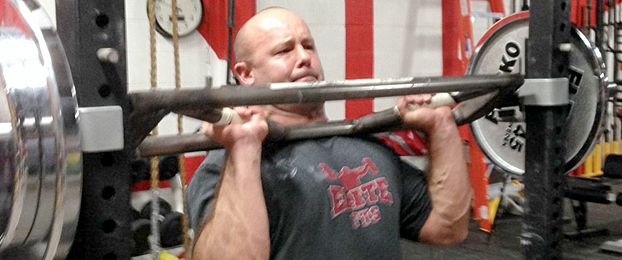
In this article, the second in our Torso Training series, we will cover rotational exercises that don’t specifically target the rectus ab. Our exercises will focus on the obliques (internal and external) and the quadratus lumborum.
Of course there are other muscles you might have never even heard of that are involved here, but these two are going to be our main focus. I won’t bore you with listing all of the names of the other ones (like many gurus do), just realize that rotation is very important and often a neglected aspect of training.
Some experts say rotational strength can be increased up to 300% by incorporating these types of exercises. Ok – that’s great, but the big picture is to strengthen these muscles so your athletes are more resistant to injury and better able to deliver and receive force in a game setting.
Many athletic injuries occur during transverse plane deceleration, which is a fancy way of saying twisting while slowing down. The inclusion of rotational exercises will help to prevent this.
The following is a series of exercises, listed from easiest to hardest, that you can include in training. It is by no means every choice you can make - it is a guideline to get you started. As you become comfortable with these basic rotational exercises, feel free to try and make up your own, but for now we will start with these and cover more advanced movements in later articles. Master the basics first!
Side Bends
To perform a side bend, assume a good athletic stance and hold a dumbbell in one hand. Bend down to one side as far as you can by lowering the weight slowly down the side of your leg (towards your ankle). When you have gone down as far as you can while maintaining proper posture, switch directions, and go down to the opposite side. Go equal distances on both sides. Avoid twisting and leaning forward on these. When you have completed the desired reps, switch the weight to the other hand.
Try to focus on pulling your ribs towards your hips as you perform side bends and don’t be afraid to go heavy! Our strongman athletes routinely do these with bodyweight, or more, in each hand
Rainbows
Rainbows are also shown in the EliteFTS Squat and Deadlift Exercise Index DVD, so I won’t go into a huge explanation of them here. EliteFTS Squat and Deadlift Video
Lie on your back, arms out to the side, lift your legs up with your heels pointed to the ceiling. Keeping your legs together, lower your legs as far down to the left side as you can then reverse direction following through to the right side. Try and keep your upper body in contact with the floor, moving it as little as possible. It is important to make sure that you twist from your torso and not focus on moving your feet! The movement of the legs is a byproduct of the action taking place in your midsection.
Rockies
Why do we call them Rockies? Because Rocky did them in the first movie! I think the ‘gurus’ call them seated dynamic medicine ball transverse rotational twists but I like the name Rockies much better. To perform a Rocky, sit on the floor, legs out in front of you; keep your knees slightly bent and your chest up. Take a medicine ball and twist quickly to the left – put the ball down on the floor behind your back - then quickly twist to the right – and pick it up. Repeat doing an equal amount of reps in each direction.
Rockies not only build rotational strength but also increase trunk flexibility. At TPS, we prefer to use heavy, non-bouncing medicine balls for these. D-Balls (no not that kind) are perfect and they are available at this site as well. Don’t be afraid to go heavy on these!
Bicycle Crunch
Everyone should know this one. Lie on your back, hands behind your head, elbows out and in line with your ears. Bring your right knee and left shoulder towards each other. Then switch and bring your left knee to your right shoulder. The name implies you should move your legs as if pedaling a bicycle.
This is fine for beginners but more advanced athletes should us less leg drive and try to initiate the majority of the movement using just the torso muscles. You will also find that the bigger athletes get winded doing these, especially powerlifters with a bench belly. Keep them moving and they will adapt quickly.
And there you have it. These are four basic exercises to get you going on building up your rotational strength. In later articles, I’ll give you some training templates for application of these along with a few more advanced exercises as well.
Go heavy!








